It’s that time of year again! SHOT Show is back, and you can bet on us being there. Come visit the B E Meyers team at booth #20413 (you know you want to).
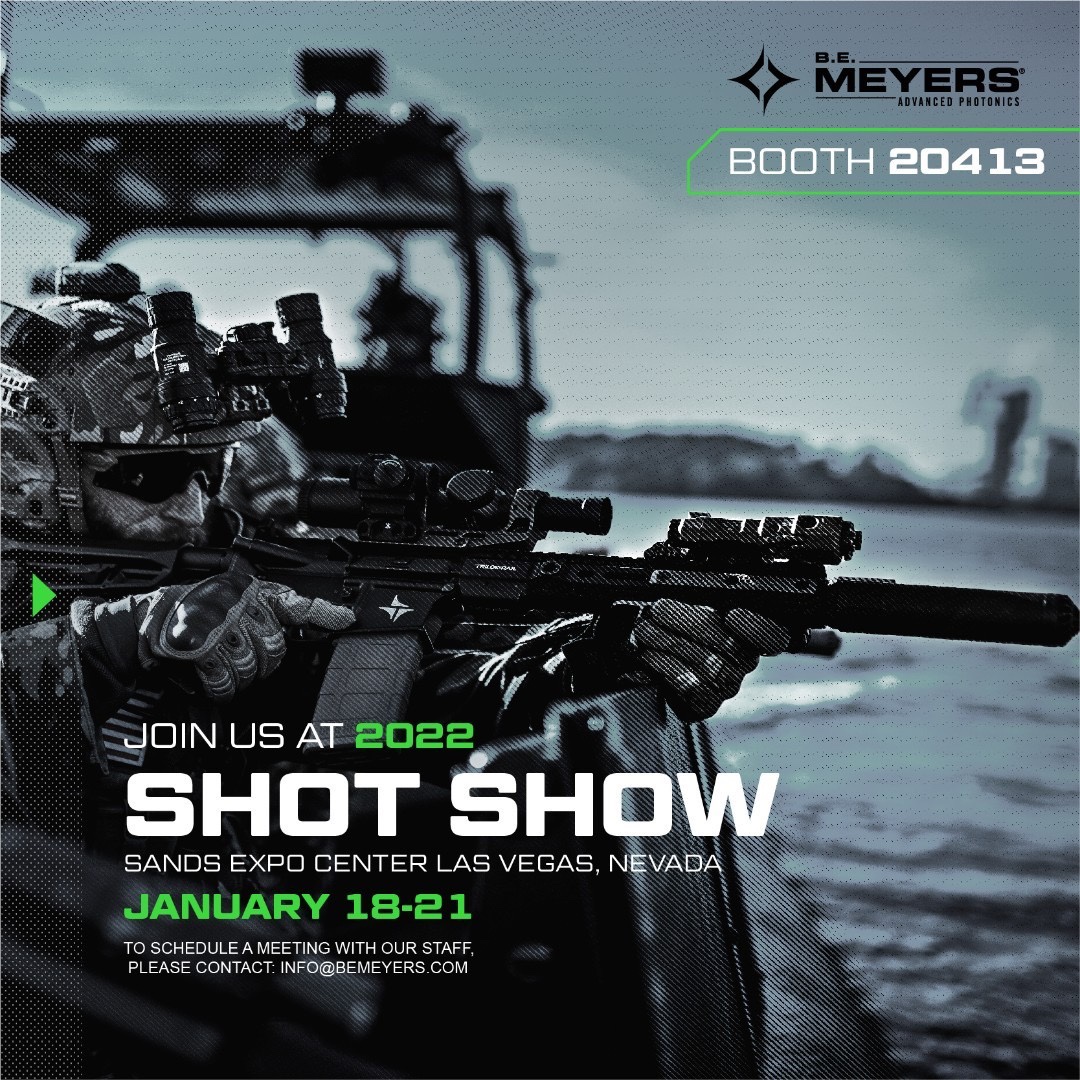
To schedule a meeting with our staff please reach out via info@bemeyers.com
It’s that time of year again! SHOT Show is back, and you can bet on us being there. Come visit the B E Meyers team at booth #20413 (you know you want to).

To schedule a meeting with our staff please reach out via info@bemeyers.com
Kitanica is well known for their American made clothing and the new Taramack Fleece caught my eye on Instagram.
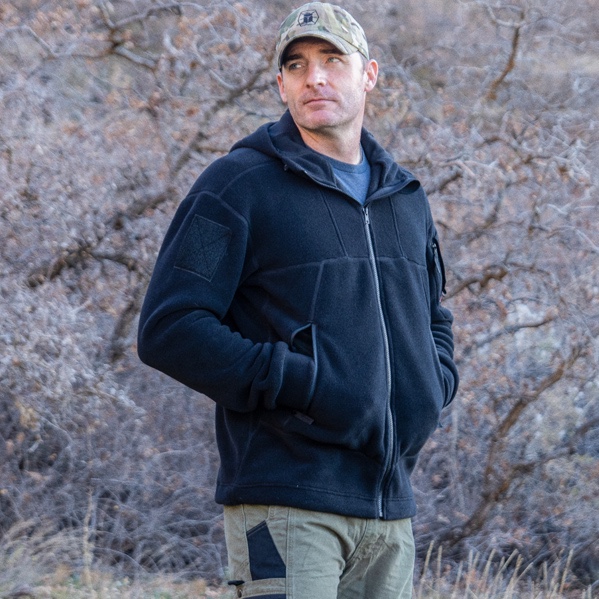
This hoodie features a full
front zip along with dual zippered chest pockets and an inside chest zippered pocket along with a left shoulder pocket with pen tubes and cover and a right shoulder pocket with Velcro Loop patch.
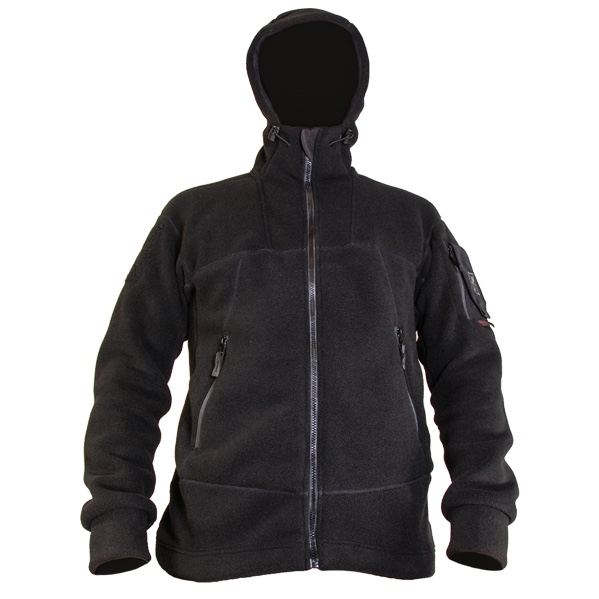
Offered in Black 300 GSM Polartec ThermalPro fleece in sizes XSmall through 3XLarge.
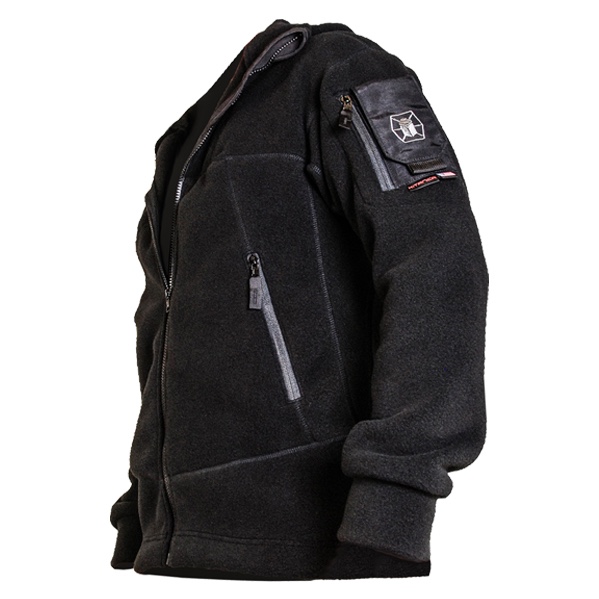
kitanica.com/collections/fleeces/products/new-hoodie
Murdock Webbing has introduced MultiCam Black to their line of Jacquard webbing. It meets all nIR requirements set by Crye Precision, and is offered in the following constructions:
• Backpack strap weight products – designed to meet or exceed the specifications for AA-55301. Comes in standard widths of .75”, 1”, 1.5” and 2”. Custom widths also available.
• Belt weight products – 1.5” and 1.75” standard widths. Custom widths also available.
• NEW: Reinforced products – maximum “stiff” hand that does not bend from selvedge edge to edge. Rigid, hard-wearing belt and backpack weight webbing for heavy duty, high intensity applications.
What’s more, Murdock is the only webbing manufacturer using Schoeller’s NanoSphere® Technology. Optional NanoSphere® application repels water and dirt to create a self-cleaning finish.

Be sure to visit Murdock Webbing at SHOT Show in booth #31000 and see their full line of narrow woven fabrics in such patterns as:
• MultiCam® and MultiCam® Black
• A-Tacs AU, A-Tacs FG, and A-Tacs iX
• Kryptek Highlander and Kryptek Mandrake,
• Woodland M81
• PenCott BadLands and PenCott GreenZone
• AOR1 and AOR2
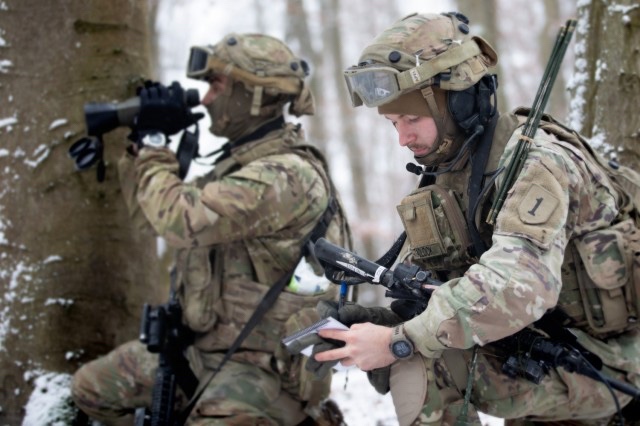
HOHENFELS, Germany — A two-person team of Airmen is dropped off by a Bradley Fighting Vehicle at the forward line of troops. They move down the line of cavalry scouts until they meet another small team, this one made up of U.S. Army artillerymen, who are dismounted from their own Bradley and are outfitting their rucksacks for an extended patrol. They are preparing to scout enemy positions, checking their radios and packing binoculars for a long patrol behind enemy lines.
The teams are part of the force-on-force exercise portion of Combined Resolve XVI, which includes approximately 4,600 armed forces service members from Bulgaria, Georgia, Greece, Italy, Lithuania, Poland, Serbia, Slovakia, Slovenia, Ukraine, United Kingdom and the United States. The operations are being conducted by integrated battalions with multinational units operating under a unified command and control element, allowing the U.S., its allies and partners to experience invaluable training alongside each other.
“Today we are going out as a COLT (Combat Observation Lasing Team),” said Senior Airmen Fernando Marquez, a Joint Terminal Attack Controller with 4th Air Support Operations Group. “A COLT team is basically the eyes on the ground when our sensor assets, which typically allows us to see far, cannot do the job. We have to push behind enemy lines, or in as far as possible with the enemy, so we can provide real targeting data for the brigade and division fires assets.”
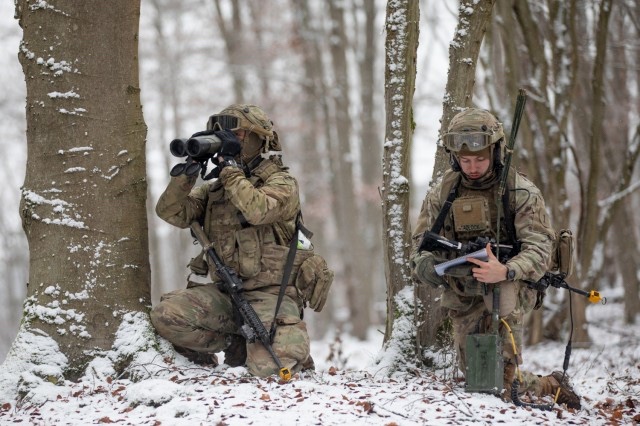
The goal of COLT teams is to identify enemy targets, and, if possible, the teams will use laser targeting systems to mark targets for precision guided munitions. Joint teams of Fire Support Teams, known as FiSTers, and JTACs are best suited for providing COLT support to an Army brigade deployed in a combat scenario.
“Our mission is a list of high-value enemy targets,” said Sgt. Devon Eaker, a Joint Fire Support Specialist with 1st Battalion, 5th Field Artillery Regiment “Hamilton’s Own,” 1st Armored Brigade Combat Team, 1st Infantry Division. “I think I’m lucky to have the six guys total that we have right here. I’ve worked with these two JTACs before, and I’ve worked with the other three FiSTers a lot, and I can’t think of a better group of dudes to send forward to do this.”
FiSTers are the 1-5FA Headquarters and Headquarters Battery fire support officers, noncommissioned officers and enlisted joint fire support specialists responsible for identifying indirect fire, or fires, missions on the Combined Resolve XVI notional battlefield. FiST teams are attached to all of the multinational maneuver units operating during CBR XVI. This is an opportunity for these multinational units to experience the capability of the U.S. to provide close air support in joint operations.
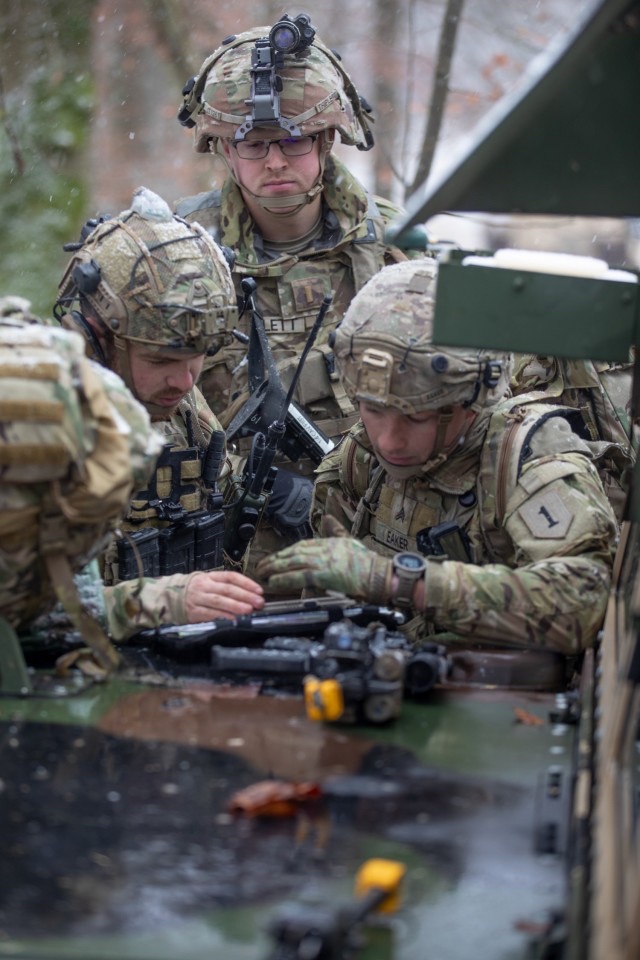
“My fire support NCOs are organic to the field artillery battalion but are tasked out to each maneuver element,” said 1st Sgt. Michael York of HHB. “They are combat multipliers, and they enable the maneuver units to perform their mission by providing them with fires. So, if there is ever artillery, mortars or attack aviation getting called in, there is a fire supporter attached to that asset.”
Air Force JTACs direct the actions of aircraft while engaged in close air support. They can call in close air support from F-22s, A-10s, F-35s, or anything that the U.S. Air Force can provide air-to-ground operations.
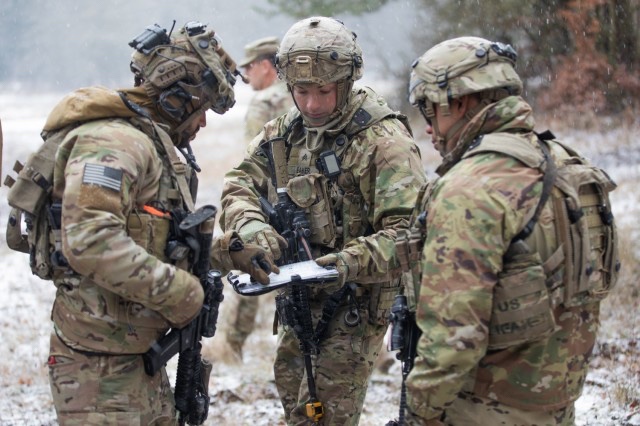
“We’re fighting this new fight,” Marquez said. “We’re getting out of the COIN [counterinsurgency] mentality and moving into this new LSCO [large scale combat operations] fight. So, we are trying to shape the way we fight this new battle.”
Despite the proliferation of unmanned aerial vehicles in combat operations, both the Army and the Air Force continue to train and develop ground-force fire support teams. The force-on-force exercise held during Combined Resolve XVI at the Joint Multinational Training Center in Germany provides an excellent training opportunity for COLT.
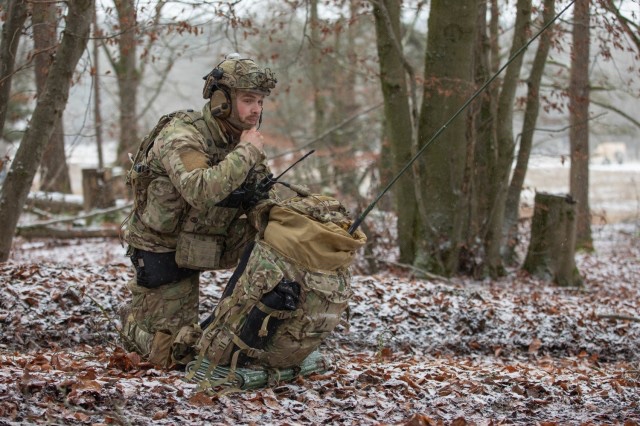
“We’re essentially deep strike and reconnaissance,” Eaker said. “We get out there, forward of the FLOT, as close to the enemy as we can, see what’s coming and pitch it backwards. And if we can, we’ll kill what’s out there. We have access to aircraft via JTACs, fixed and rotary wing. We are in range of all artillery that the brigade has now through 1-5FA. With those combined, there’s not much out there that we can’t kill.”
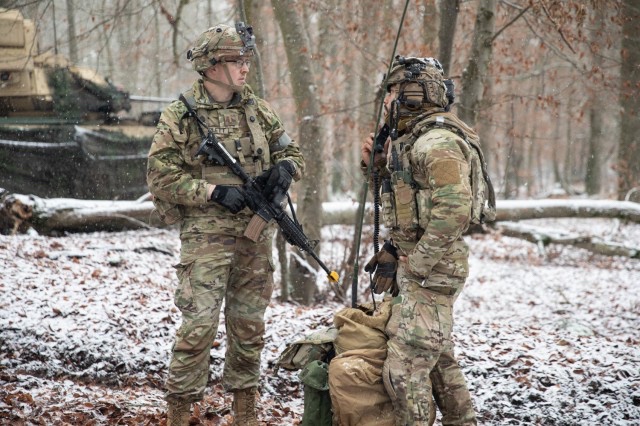
The modern battlefield is shaped by UAVs directing cameras toward the enemy to gather intelligence. As the fight turns from terrorism to an enemy with more sophisticated electronic equipment and air defense, the potential disruption of UAV imaging is a very real threat. Well trained COLT teams ensure that U.S. Forces maintain the ability to penetrate enemy formations, identify threats and deliver fires munitions onto those threats, helping to maintain overwhelming firepower which is critical to victory on the LSCO battlefield.
To learn more about exercise Combined Resolve, follow: www.dvidshub.net/feature/CombinedResolve
By SSG George Davis
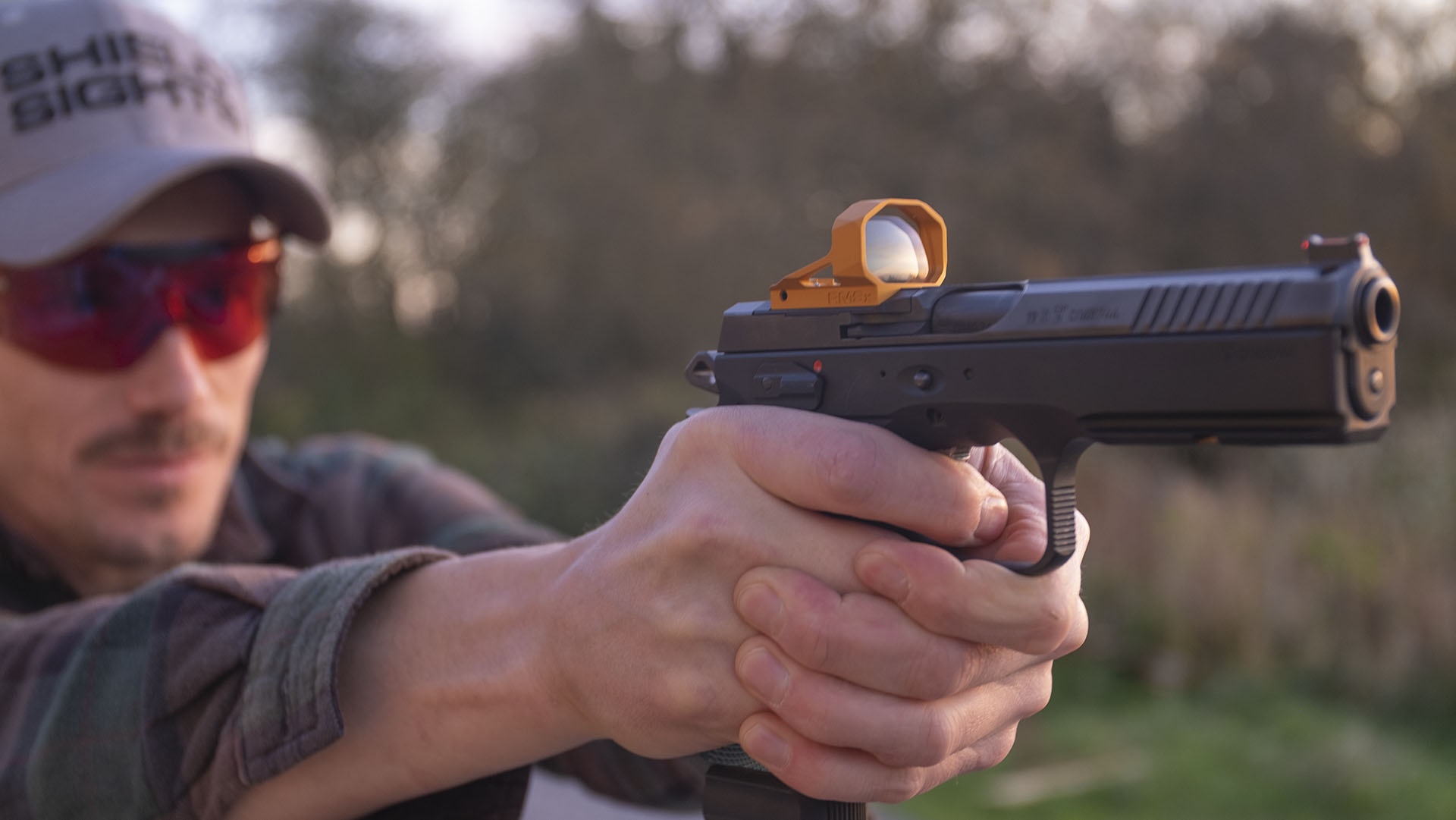
For Immediate Release – Dorset, England, U.K. – Shield Sights, Pioneer of compact red dot optics, is pleased to announce the RMSx as the new dedicated competition sight. The RMSx will replace the original RMS as the dedicated competition optic for Shield Sights.
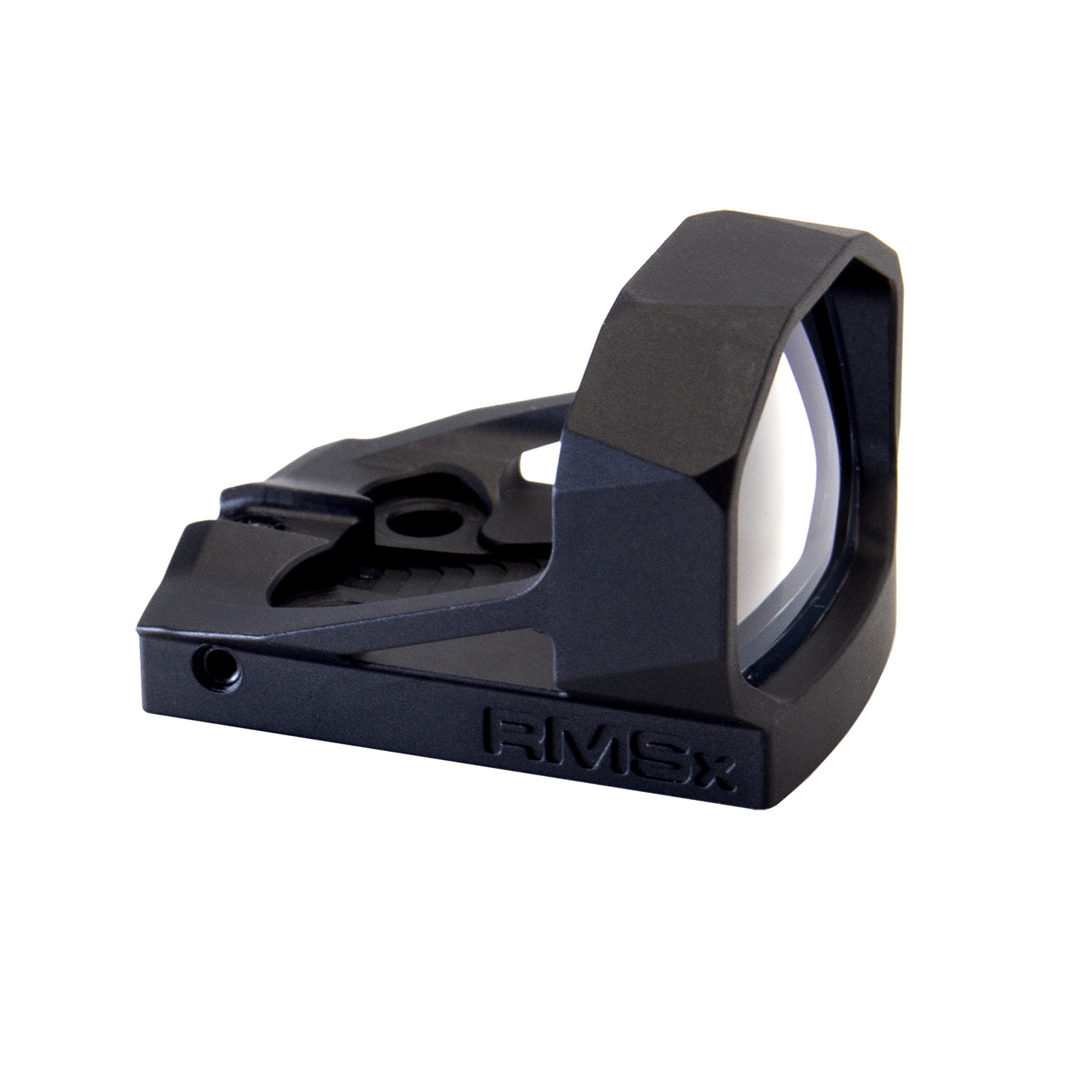
With competitive shooting being at the core of Shield Sights foundation, the RMSx pulls from the experience of two generations of international competitive pistol shooting experience. The RMSx features a larger viewing window with a distinctive housing and parallax free and an all-new hard dip coated (HDC) polymer lens with a 5H hardness rating. The RMSx shares the same Shield footprint that can be found cut into the slide of many popular handguns and matches the entire RMS and SMS line of optics. The RMSx takes advantage of updated LED and electronic technology that produces increased reliability and longer battery life over a wide variety of conditions.
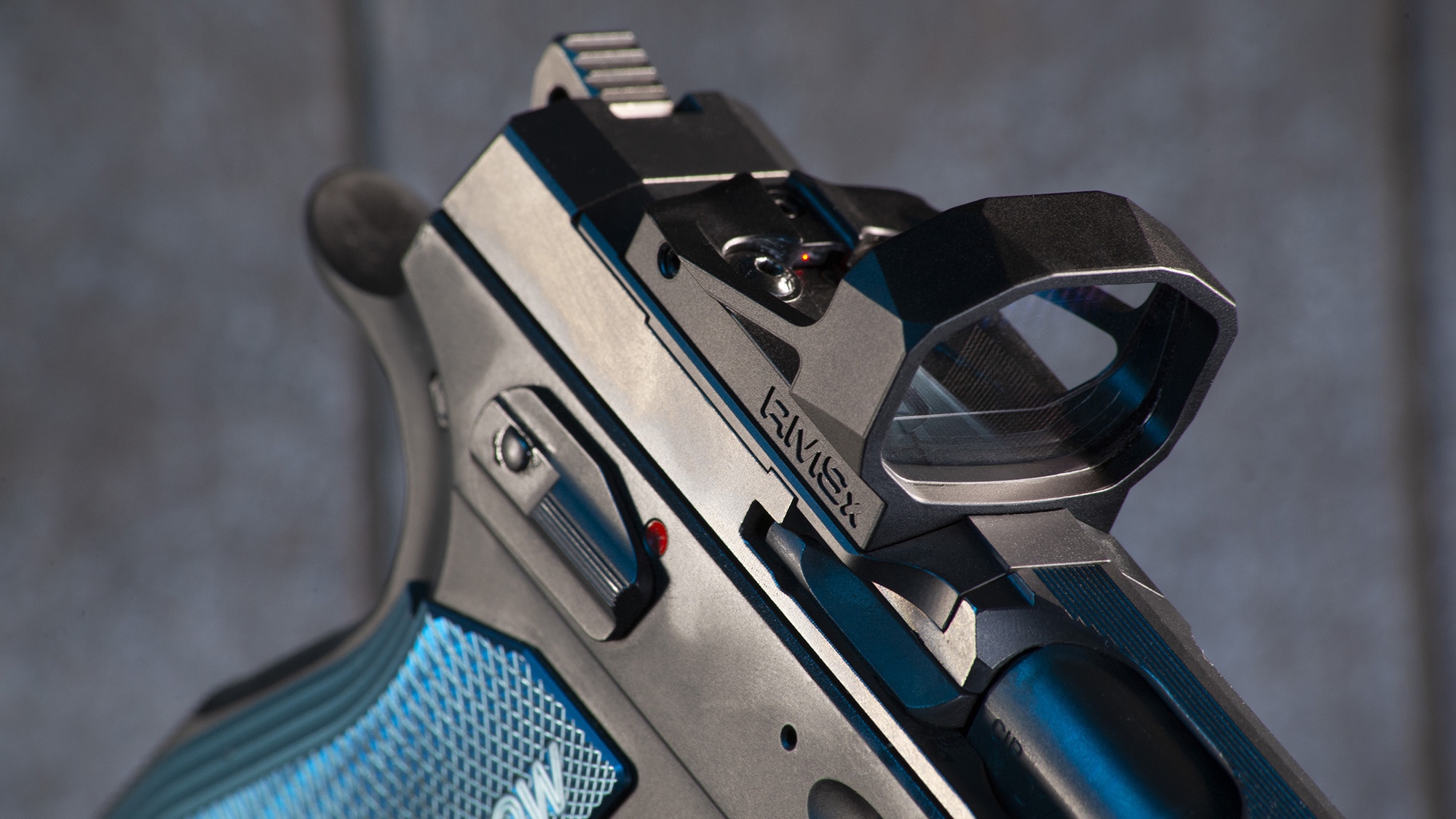
“Shield Sights started over 25 years ago by developing and manufacturing red dot sights specifically for the Competitive shooter. Over the years we have learned the competitive environment presents a completely different set of variables than are commonly found in other applications,” said James White, CEO Shield Sights “We feel the RMSx provides a perfect balance of features that will meet the needs of the most discerning competitive shooters.”
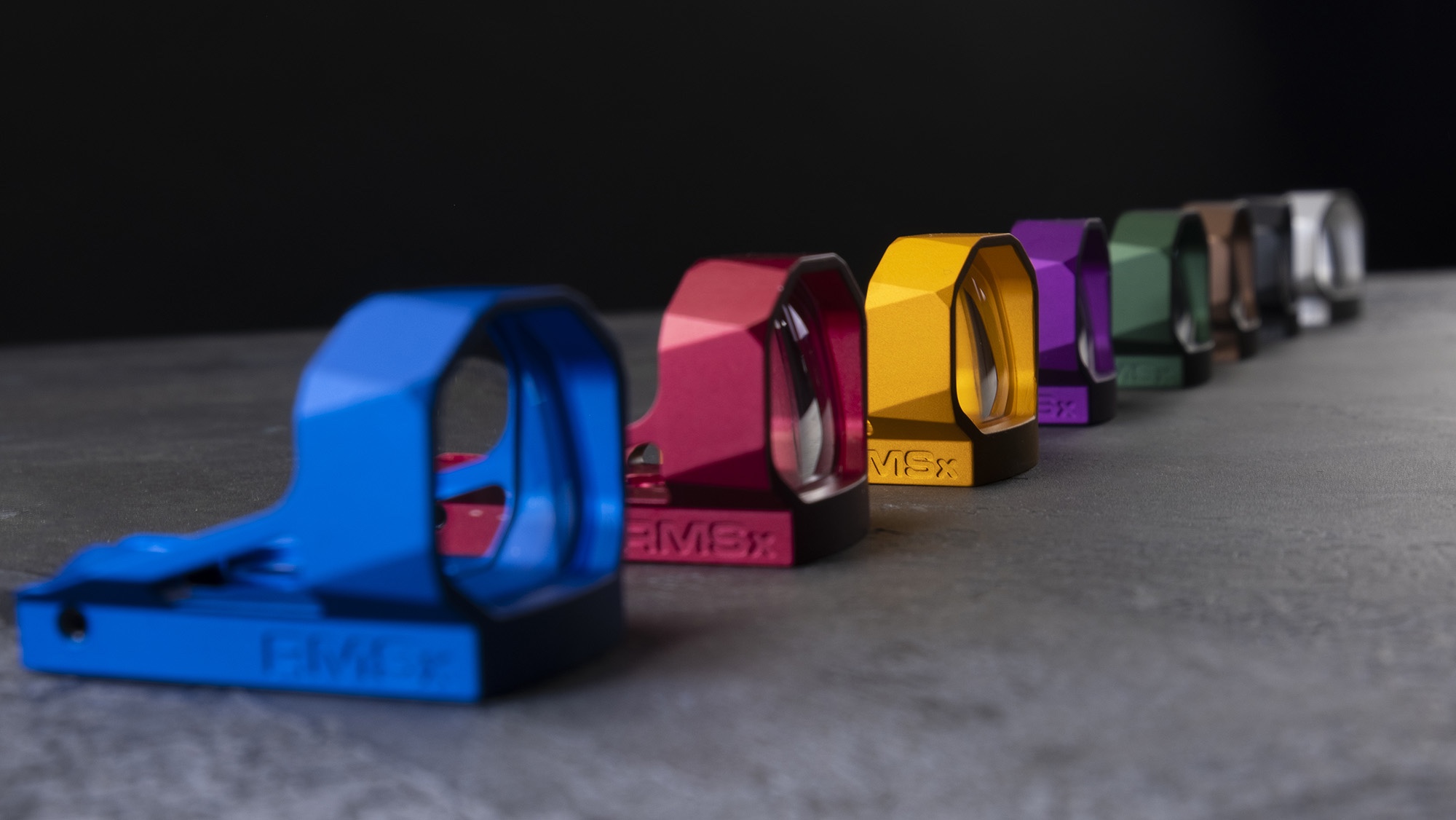
Features:
-80% larger viewing window
-Clear and parallax free HDC polymer lens with 5H hardness rating
-Low Profile lens for an intuitive co-witness to standard height sights
-Available in 8 MOA and 4 MOA dots
-Updated Electronics with faster refresh rate and better battery life

Dimensions:
-Lens Width: 34mm, 1.4”
-Base Width: 23mm, 0.9”
-Height: 23mm, 0.9”
-Weight: 19g, 0.67oz without battery
Optics are currently available for sale through the Shield dealer network or on the Shield website: www.shieldpsd.com
WESTFIELD, Massachusetts – December 13, 2021 – Savage Arms is proud to announce the addition of the 110 PCS (Pistol Chassis System) to its line of centerfire firearms. The 110 PCS is a bolt-action pistol built around the 110’s factory blueprinted action. This new pistol provides all the features that have come to define the Model 110, but in much more compact configuration.
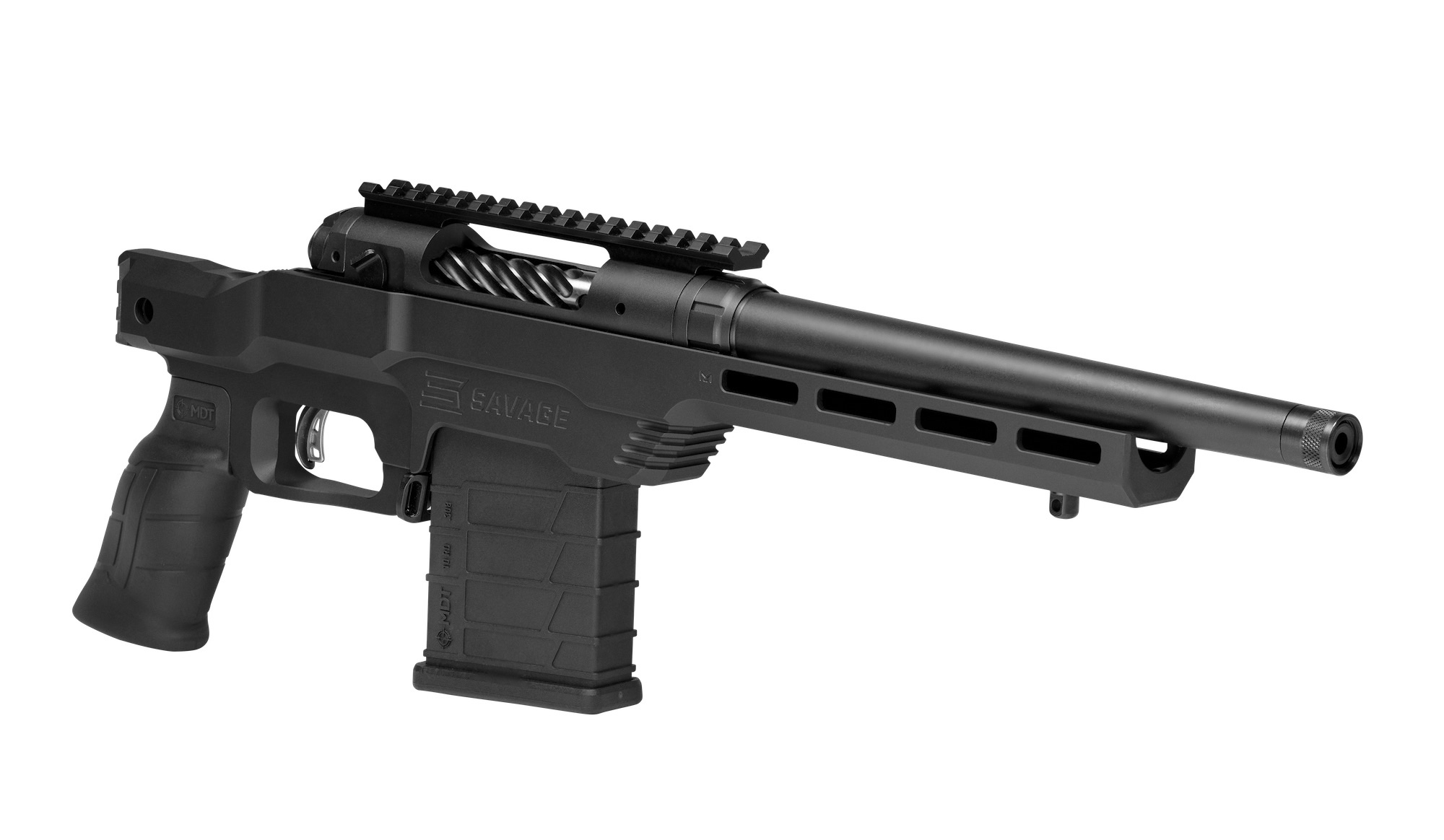
“The Model 110 has set the bar high for bolt-action rifles,” Jessica Treglia, Senior Brand Manager for Savage Arms. “Now the adaptability and performance that we see from our flagship rifle line is available in a pistol chassis system. Don’t let the 110 PCS’s diminutive size fool you—we’ve taken this gun out past 500 yards with reliable, repeatable accuracy.”
Like other 110s, the 110 PCS has a user-adjustable AccuTrigger for a crisp, clean pull. The action is secured in a one-piece aluminum pistol chassis from Modular Driven Technologies (MDT) and the 110 PCS feeds from an AICS-style detachable box magazine. The 110 PCS is an ideal platform for anyone wanting long-range accuracy from a compact firearm.
Features:
• Carbon steel, matte black, barrel and receiver
• Medium-contour 10.5” barrel, with threaded muzzle (5/8-24)
• Machined aluminum, 1-piece chassis with 7” free floating modular forend with M-LOK™ slots
• 1-piece 0 MOA rail
• Left hand bolt, right hand ejection
• Spiral fluted bolt body
• 2.5-6 lb user-adjustable AccuTrigger
• Picatinny rail on rear of chassis
• Accepts most AR-15 pistol grips
• Barricade grooves milled into the front of the magazine well
• Ambidextrous magazine release and AICS Magazine
Part No. / Description / MSRP
57797 / 110 PCS 6.5 Creedmoor / $999
57798 / 110 PCS .308 Win / $999
57799 / 110 PCS 350 Legend / $999
57800 / 110 PCS 300 BLK / $999
57801 / 110 PCS .223 Rem / $999
December 14, 2021 — West Valley City, UT — SilencerCo is excited to introduce the Harvester EVO, a lightweight suppressor designed for hunters and precision shooters. This product is the successor to SilencerCo’s Harvester 300, enhanced to include a few key features and currently available at SilencerCo Retailers.
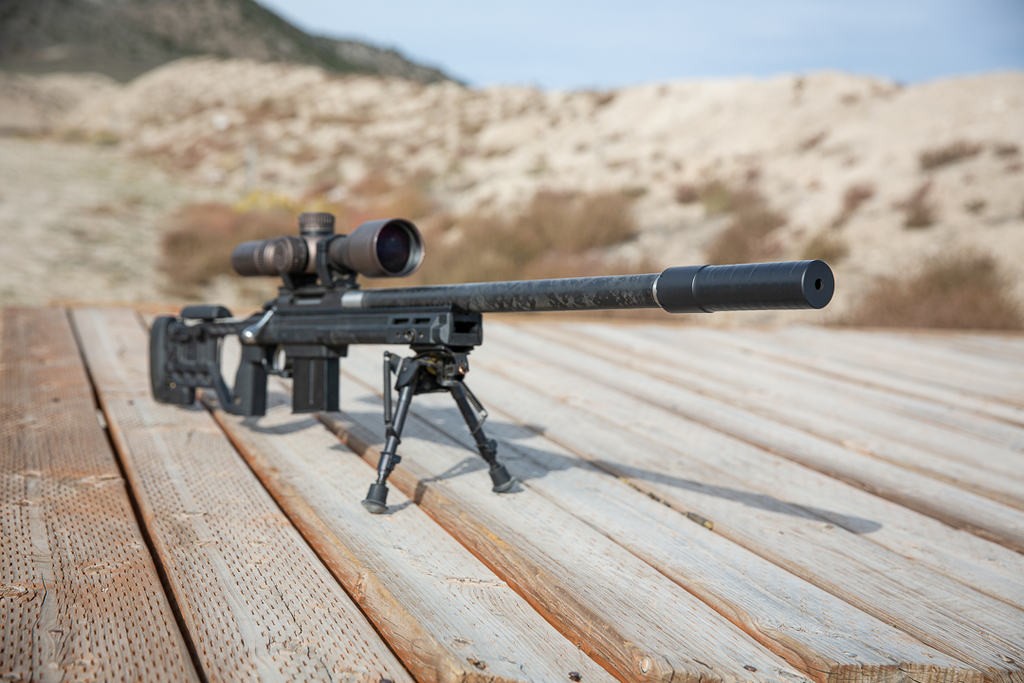
Accommodating calibers ranging from .223 REM to .300 WIN, the Harvester EVO is the ideal suppressor for .30 caliber bolt-guns and rifles. Consumer feedback on the previous Harvester models led SilencerCo engineers to make the EVO shorter, lighter, more affordable and ready to go right out of the box.
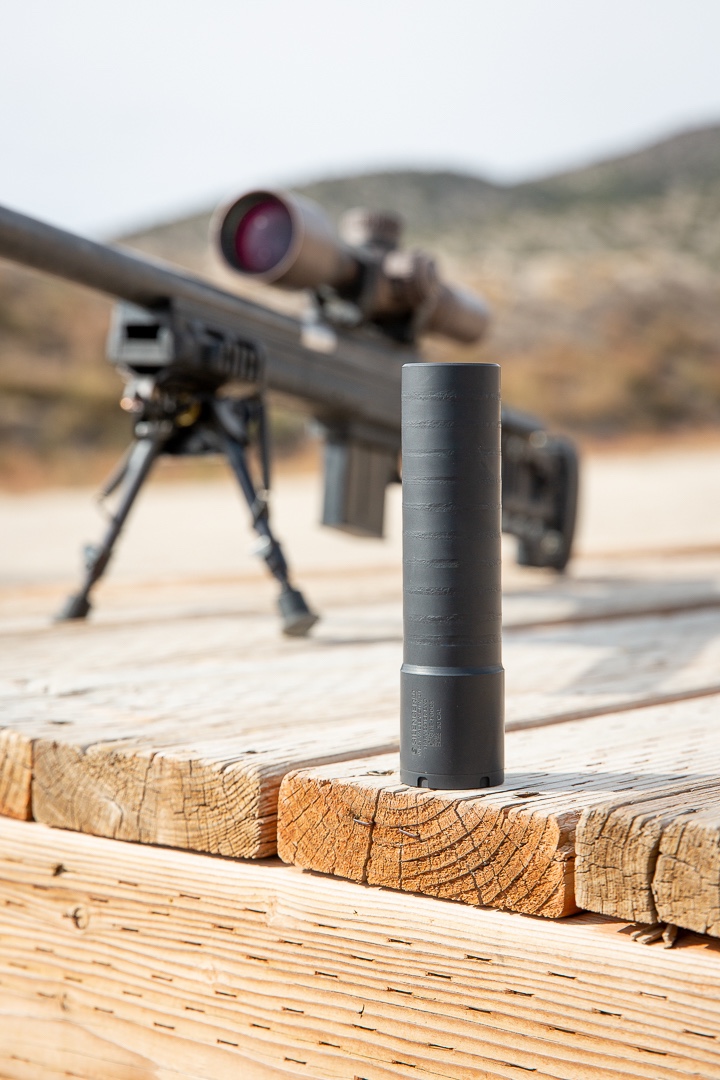
“The most impressive phenomenon of the Harvester EVO is it’s lightweight nature despite being created from rugged, hard-use materials,” said SilencerCo Senior Product Development Specialist, Dewie Vieira. “Weighing just 10.8 ounces, it is constructed of 17-4 heat treated stainless steel, inconel and cobalt 6 with a tubeless design. This gives the EVO an edge over other hunting suppressors.”
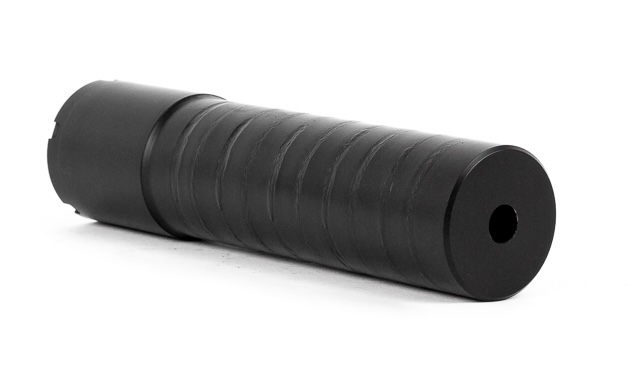
Not only is the Harvester EVO less likely to get caught on bushes and brush in outdoor environments, but it is capable of withstanding the most extreme conditions typically encountered by hunters and precision shooters.
Product Specifications:
-Rated for calibers ranging from .223REM/5.56NATO to .300 WIN
-Tubeless and extremely lightweight design
-Weighs 10.8 ounces
-Measures 6.24” in length
-Constructed with cobalt-6, inconel and 17-4 heat treated stainless steel materials
-Compatible with Bravo Mounting Accessories
-Ships with both a Bravo ½ x 28 and Bravo ? x 24 Direct Thread Mount
-MSRP of $680
For more information on the Harvester EVO, visit silencerco.com/silencers/harvester-evo. To find the closest SilencerCo retailer, click here.